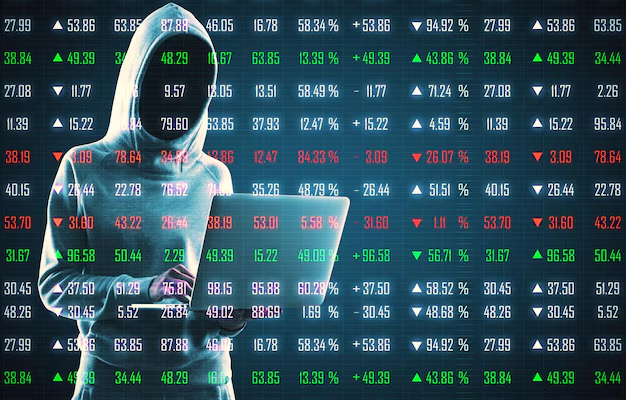Understanding Slippage in Crypto: What You Need to Know
In the ever-evolving world of cryptocurrency, even small fluctuations can impact your trading decisions and outcomes significantly. One such intriguing, yet often misunderstood concept is slippage. If you've ever bought or sold cryptocurrency and noticed that the price you paid or received was not quite what you expected, you've likely experienced slippage. But what exactly is slippage, and how does it affect your crypto transactions?
🤔 What Is Slippage in Crypto Trading?
Slippage occurs when there's a difference between the expected price of a trade and the price at which the trade is actually executed. This often happens in fast-moving markets where prices can change rapidly due to market volatility or a sudden lack of liquidity. Understanding slippage is crucial for crypto traders because it can affect profitability and may lead to unexpected losses.
Types of Slippage
Positive Slippage: This occurs when a trader receives a better price than expected. For buyers, this means paying less, and for sellers, it means receiving more.
Negative Slippage: This is more common and happens when a trader receives a worse price than expected. Buyers might pay more, and sellers might receive less.
Causes of Slippage
- Market Volatility: Rapid price changes within seconds can lead to slippage.
- Low Liquidity: Limited buyers or sellers in the market can result in slippage, especially for larger trades.
- Order Type: Market orders, which are executed immediately, are more prone to slippage compared to limit orders, which only execute at a set price or better.
🔍 How To Minimize Slippage in Crypto Trading
Although you might not be able to eliminate slippage entirely, you can take steps to minimize its impact on your trading activities:
Use Limit Orders
Limit orders can help you control the maximum amount you're willing to pay (or minimum amount you're willing to receive). By setting a specific price, you can avoid the unpredictability of market orders. However, be aware that a limit order might not be executed if the market price never reaches your set price.
Focus on High-Liquidity Assets
Trading popular cryptocurrencies like Bitcoin or Ethereum often results in less slippage due to their high liquidity. Lesser-known altcoins might experience significant slippage due to fewer participants in the market.
Trade During Quiet Periods
Trading outside peak hours or during low volatility periods can reduce the chance of slippage. This may include avoiding major market news events or significant market announcements.
Consider Using Stops
Stop orders can help automate your trades and manage risk by setting predetermined points for buying or selling, without constantly monitoring the market.
📊 Key Differences: Slippage in Crypto vs. Traditional Markets
When discussing slippage, it's helpful to consider how it operates across different types of financial markets:
Crypto Markets: Characterized by 24/7 trading, high volatility, and frequent price changes, making them more prone to slippage.
Stock Markets: Generally have more regulated trading hours and less volatility, potentially leading to less frequent slippage.
Market Conditions
Crypto markets are heavily influenced by regulatory news, technology shifts, and sentiment. These factors can lead to sudden large shifts in price.
Traditional markets might be less volatile due to more established trading practices and regulations.
Technology and Infrastructure
The decentralized nature of many crypto exchanges can lead to delays and mismatches between expected and executed prices, a less common occurrence in tightly regulated traditional securities markets.
💡 Practical Tips to Deal with Slippage in Crypto
Here are some practical tips to deal with slippage effectively:
- Stay Informed: Monitor market trends and news that may increase volatility.
- Use Reputable Exchanges: Choose exchanges known for their reliability and high liquidity.
- Regularly Review Strategy: Adjust your trading strategies based on current market conditions to mitigate the risk of slippage.
📝 Summary of Key Takeaways
Here's a concise overview of managing slippage in cryptocurrency trading:
- 🔄 Use Limit Orders: Reduces the risk of price variance.
- 📈 Trade High-Liquidity Assets: Less slippage due to more market participants.
- 🕒 Avoid Peak Times: Trade during periods with lower volatility to minimize risks.
- 🔍 Be Informed: Keep an eye on news and market shifts for better decision-making.
Understanding slippage is a fundamental part of being a successful cryptocurrency trader. While market volatility is something traders can't control, being aware of slippage and adopting strategies to minimize its impact can help in crafting a resilient trading approach. Navigating through the nuances of slippage allows for more informed decisions, ultimately contributing to more predictable and successful trading outcomes. 🤓

Related Topics
- Can a Masters Student On F1 Student Invest In Crypto
- Can I Buy Crypto On Fidelity
- Can I Buy Crypto With a Credit Card
- Can You Buy Crypto With a Credit Card
- Can You Day Trade Crypto
- Can You Short Crypto
- Do You Have To Pay Taxes On Crypto
- Does Crypto Arbitrage Work Reddit
- How Can I Buy Crypto
- How Do I Buy Crypto